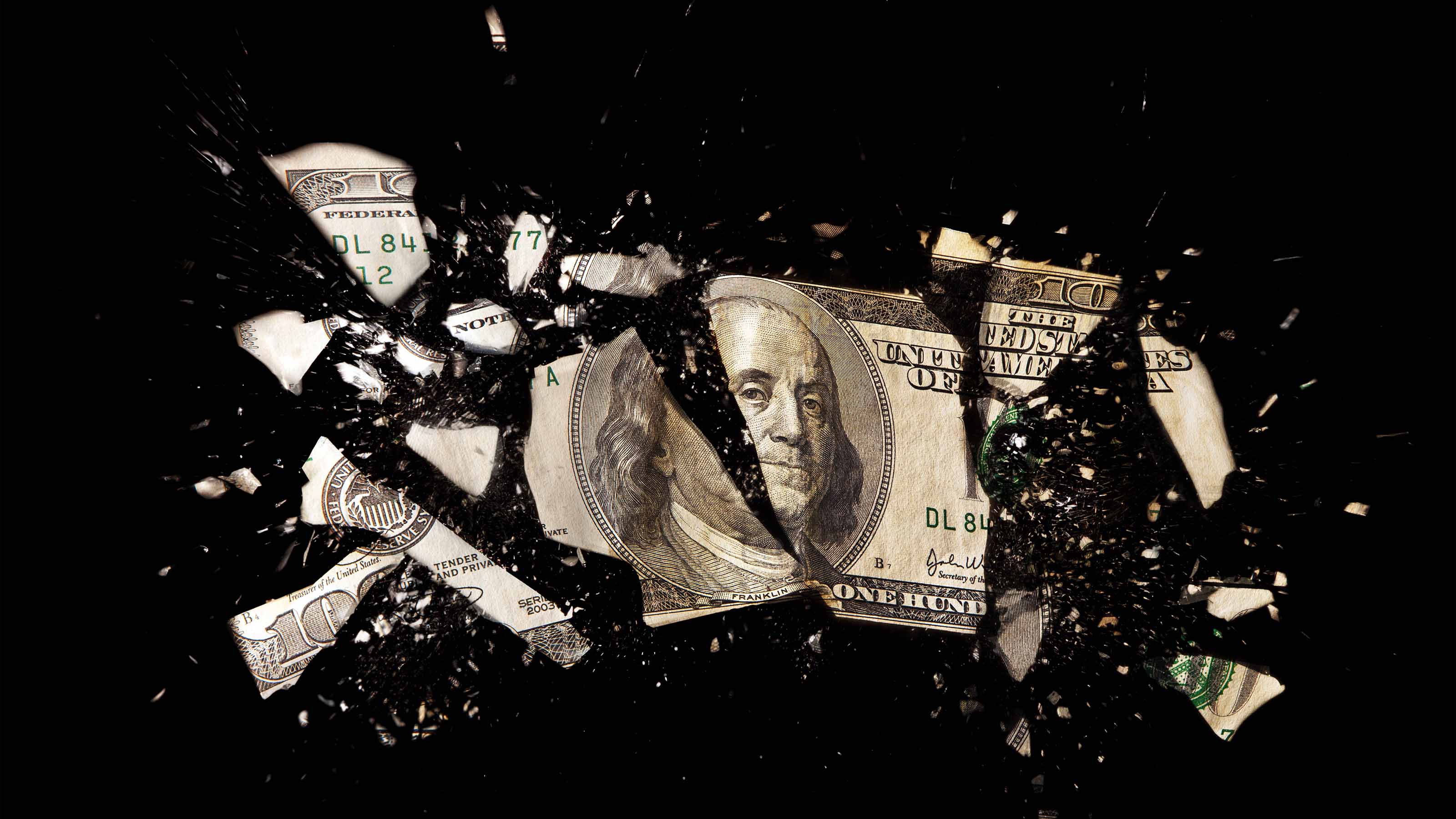5 Good Dividend Stocks to Own in Any Market
Admission tickets to the all-weather club aren’t cheap these days.


Admission tickets to the all-weather club aren’t cheap these days. Price-earnings ratios for companies such as Procter & Gamble (symbol PG)—the ultimate “safety” stock—are well above the average price-earnings ratio of 17 for Standard & Poor’s 500-stock index. Yes, these companies pay plump dividends, and they can rumble through a rough patch in the economy without leaving a gaping hole in their earnings. But they aren’t growing much. And their stocks may have run so far—with P&G returning 28% in the past year, including dividends—that they may be wheezing as they try for further gains.
More compelling to us are companies with healthy sales, rising dividends and more potential to lift their bottom line. Along these lines, we found five compelling stocks, none of which looks excessively priced relative to its growth prospects. We can’t make any promises about how they’ll perform in the near term. But their businesses look sturdy, making the stocks solid bets to weather a downturn in the economy and rebound when it passes.

Eli Lilly
- Symbol: LLYShare price: $79.74Yield: 2.5%Price-earnings ratio: 20
Drug maker Eli Lilly has muddled through a few years of lean profit growth. But it has spent heavily on developing new products. Those efforts are now paying off. Several recent product launches, along with expanded uses for some older drugs, are lifting Lilly’s bottom line. Wall Street expects earnings to increase by 14% in 2017 and 11% in 2018—one of the highest growth rates among major pharmaceutical firms.
Looking past the next few years, Lilly should benefit from a strong slate of drugs in late-stage development, including medicines for breast cancer, migraine headaches and chronic lower back pain due to cancer treatment. Also in the works is a potential Alzheimer’s treatment, which could be big winner if it gains regulatory approval.
Not all of these drugs will make it to market. The Alzheimer’s drug, in particular, is a high-stakes gamble that could turn into a bust. Lilly expects to report results from late-stage clinical trials by the end of 2016 or early in 2017; if the drug flops, the stock could get walloped.
That said, Lilly doesn’t need the Alzheimer’s medicine to rack up earnings growth. Even without that drug, the firm should be able to lift profits at a 12% annual pace through 2020, says J.P. Morgan, which recently upgraded the stock to “overweight” from “neutral.” Lilly also runs a large animal-health-products division, which it bought from Novartis in 2014 for $5.4 billion. That unit now accounts for more than 10% of sales, and it should deliver steadily growing profits that can help offset potential weakness in the pharmaceutical division.
One other reason to like the stock: a rising dividend. Lilly pays just 57% of its earnings in dividends and can easily afford to hike its payout; its current annual rate is $2.04 per share.

Enterprise Products Partners
- Symbol: EPDShare price: $27.42Yield: 5.8%Price-earnings ratio: 18
One of the largest energy transport firms, Enterprise Products Partners runs a vast network of pipelines, processing plants and storage terminals. Revenues took a big hit when oil prices collapsed in 2014 and 2015. But the business has stabilized and is now looking up. Analysts expect Enterprise to report sales of $25.7 billion in 2017, up 13% from 2016. Profits should increase by a similar amount in 2017, hitting $1.44 per share, according to Wall Street analysts’ forecasts.
Structured as a master limited partnership, Enterprise aims to pay out most of its cash profits to unit holders (the MLP equivalent of common-stock shareholders). Most MLPs dole out payments to general partners before they distribute cash to investors. But Enterprise doesn’t owe any payments to its general partners, providing more cash for unit holders. Furthermore, Enterprise earns more than enough cash profits to cover its distributions, giving it a cushion to maintain payouts if prices for oil and gas tumble again.
If anything, distributions should rise as Enterprise’s investments in pipelines and other projects start to pay off. The firm began operations at an ethane-export plant in the third quarter, and it’s ramping up production at two natural gas processing plants. Overall, Enterprise has $5.2 billion worth of “growth projects” that will start operating in 2017 and 2018, says Bank of America Merrill Lynch, which rates the stock a “buy” and expects the shares to hit $32 by July 2017.

General Electric
- Symbol: GEShare price: $29.53Yield: 3.1%Price-earnings ratio: 19
General Electric hauls in more than $125 billion in revenues per year, selling products such as gas and steam turbines, jet engines, and health-imaging machines, as well as its namesake refrigerators and dishwashers. Sales are now much lower than they were in 2009, when the company included a giant financing division and media assets such as the NBC broadcast network and Universal Studios (GE has sold its media business and most of its financial division). But it has made some big moves to bolster its industrial business, including a $9.5 billion deal to buy the power-generation business of French company Alstom, an acquisition that closed in late 2015.
The upshot: GE is transforming itself into a leaner and more profitable firm. Profit margins from its industrial businesses rose to 16.1% in the second quarter of 2016, up 4.4 percentage points from a year earlier. With a backlog of orders for its equipment and services that hit $320 billion in the second quarter, 17% higher than a year before, GE should generate strong sales for years.
A bit more than half of GE’s sales come from foreign markets, so the company would face setbacks if economies in Europe and other parts of the world started to weaken. A rising dollar would also make sales of exported goods more expensive, as well as depress profits earned in foreign currencies, which would be worth less when converted to greenbacks.
Still, analysts expect earnings to increase at a robust clip of about 15% per year in 2016 and 2017. GE’s dividend should climb by about 7% a year as profits climb. Overall, GE looks “well positioned for growth,” says Jim Corridore, an analyst with S&P Global Market Intelligence. His 12-month target for the stock is $40 per share, about one-third higher than the current price.

Regency Centers
- Symbol: REGShare price: $77.86Yield: 2.6%Price-earnings ratio: 23
Online competition poses a potentially lethal threat to many traditional retailers. But most people still visit a shopping center to buy groceries and other everyday items. That should keep rental income rising for Regency Centers, a real estate investment trust that owns 311 shopping centers around the country.
Supermarkets such as Kroger and Safeway account for 87% of Regency’s tenant base. Other tenants include restaurants, health clubs and medical offices, which are well protected from online competition. Regency also owns shopping centers in prime locations and has reported strong leasing demand: The occupancy rate of its properties (excluding new developments) inched up from 94.8% in 2012 to 96.3% at the end of the second quarter of 2016.
As a REIT, Regency issues a lot of debt to help pay for property purchases and development. That works great when long-term interest rates are low. But debt can be deadly when rates rise, increasing financing costs and lowering property values. So a hike in long-term rates could hold Regency’s stock down.
Regency’s balance sheet looks solid. The firm’s debt expense, as a percentage of net rental income, has declined in recent years, leaving the company with plenty of financial flexibility. Regency aims to spend about $200 million on property development each year, and it looks to generate returns of 7% or more on its investments. If long-term rates don’t increase substantially, the firm should be able to achieve its return goals.
With its stock up 28% in the past year, Regency isn’t the cheapest REIT. Nor does it pay as much as most other REITs (the average yield for property-owning REITs is 4.1%). Yet even at these prices, Regency still looks like a good bet because of its stable tenant base and potential to lift rental income, says Bank of America Merrill Lynch, which recommends the stock. Wall Street expects the firm to report a healthy 6.1% increase in funds from operations (a common REIT measure of profits that represents net income plus depreciation expenses) in 2017. That would lift the firm’s FFO per share to $3.47, providing ample support for Regency’s dividend (currently paid at an annual rate of $2.08 per share) and leaving room to hike its payout in the future.

Starbucks
- Symbol: SBUXShare price: $54.14Yield: 1.5%Price-earnings ratio: 25
Pumpkin-spice lattes aren’t the only things we like about Starbucks. For the first time in ages, we’re upbeat about the stock, which has slumped 9% this year and trades close to its 52-week lows.
The shares have fallen because of concerns that sales growth at the big coffee chain is slowing. Revenues at stores open at least 13 months (a key measure for restaurant chains) increased by 4% in the April-June quarter from the same period a year earlier, missing Wall Street’s forecasts of 5.7% growth. The company also trimmed its sales outlook for the fiscal year that ended on September 30, expecting comparable-store sales to climb in the “mid-single digits,” below previous forecasts of growth of more than 10%.
But Starbucks still has big expansion plans that should help make the stock a long-term winner. Although it seems as though there’s a Starbucks on every corner, the company is still opening hundreds of new stores a year in the U.S. It’s expanding even faster in Asian markets—particularly in China, where it plans to open one of its first premium stores, the Roastery, in Shanghai in 2017. Starbucks is also developing a chain of “reserve-only” U.S. stores that will be twice the size of standard Starbucks stores and will serve higher-end food and drinks. Sales of packaged coffee sold in supermarkets are climbing, too. And Starbucks has teamed up with a luxury Italian bakery and pizzeria, Princi, to sell more-upscale food items at its cafés.
These moves are likely to boost sales and earnings, along with Starbucks’ already-healthy profit margins. The company expects operating margins to have topped 19% in the just-concluded fiscal year, up from 13.5% in fiscal 2013. Analysts see sales rising 8%, to $23.1 billion, in the fiscal year that ends in September 2017, with profits climbing 11%, to $3.2 billion. Over the long term, the company looks compelling for its “growth and innovation,” says Katrina Lamb, head of investment strategy and research at MV Financial, a money manager in Bethesda, Md.
Get Kiplinger Today newsletter — free
Profit and prosper with the best of Kiplinger's advice on investing, taxes, retirement, personal finance and much more. Delivered daily. Enter your email in the box and click Sign Me Up.

-
 Stock Market Today: Trump Retreats, Markets Rejoice
Stock Market Today: Trump Retreats, Markets RejoiceStocks rally, yields soften, the dollar rises, and even beaten-down names enjoy the wages of potential trade peace.
By David Dittman
-
 In Trump’s Economy Should 401(k) Savers 'Set It and Forget It?'
In Trump’s Economy Should 401(k) Savers 'Set It and Forget It?'It’s hard to bury your head in the sand when the markets are volatile. Here’s when it makes sense and when it doesn’t.
By Donna Fuscaldo
-
 The Cheapest Places To Retire in the US
The Cheapest Places To Retire in the USWhen you're trying to balance a fixed income with an enjoyable retirement, cost of living is a crucial factor to consider.
By Stacy Rapacon
-
 Can Stocks Picked by Artificial Intelligence Beat the Market? 3 Stocks to Watch
Can Stocks Picked by Artificial Intelligence Beat the Market? 3 Stocks to Watchstocks An artificial intelligence stock-picking platform identifying high-potential equities has been sharp in the past. Here are three of its top stocks to watch over the next few months.
By Dan Burrows
-
 5 Stocks to Sell or Avoid Now
5 Stocks to Sell or Avoid Nowstocks to sell In a difficult market like this, weak positions can get even weaker. Wall Street analysts believe these five stocks should be near the front of your sell list.
By Dan Burrows
-
 Best Stocks for Rising Interest Rates
Best Stocks for Rising Interest Ratesstocks The Federal Reserve has been aggressive in its rate hiking, and there's a chance it's not done yet. Here are eight of the best stocks for rising interest rates.
By Jeff Reeves
-
 The 5 Safest Vanguard Funds to Own in a Volatile Market
The 5 Safest Vanguard Funds to Own in a Volatile Marketrecession The safest Vanguard funds can help prepare investors for continued market tumult, but without high fees.
By Kyle Woodley
-
 The 5 Best Inflation-Proof Stocks
The 5 Best Inflation-Proof Stocksstocks Higher prices have been a major headache for investors, but these best inflation-proof stocks could help ease the impact.
By Louis Navellier
-
 5 of the Best Preferred Stock ETFs for High and Stable Dividends
5 of the Best Preferred Stock ETFs for High and Stable DividendsETFs The best preferred stock ETFs allow you to reduce your risk by investing in baskets of preferred stocks.
By Kyle Woodley
-
 What Happens When the Retirement Honeymoon Phase Is Over?
What Happens When the Retirement Honeymoon Phase Is Over?In the early days, all is fun and exciting, but after a while, it may seem to some like they’ve lost as much as they’ve gained. What then?
By T. Eric Reich, CIMA®, CFP®, CLU®, ChFC®
